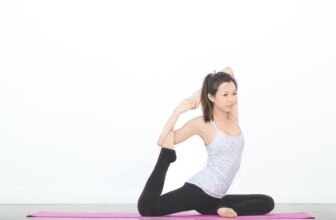Guarding Your Ears: The Essential Guide to Effective Hearing Protection
Table of Contents
- 1. Understanding Hearing Loss
- 2. The Physics of Sound: Noise and Decibels
- 3. Types of Hearing Protection
- 4. Choosing the Right Hearing Protection
- 5. Proper Usage and Maintenance
- 6. Real-Life Case Studies
- 7. Frequently Asked Questions (FAQ)
- 8. Resources
1. Understanding Hearing Loss
Hearing loss is a pervasive issue that affects millions worldwide, yet it is largely preventable. It is essential to recognize that noise-induced hearing loss (NIHL) can occur gradually and silently over time.
Key Points to Remember:
- The World Health Organization estimates that over 1 billion young people are at risk of hearing loss due to exposure to loud sounds.
- Hearing loss can lead to social isolation, depression, and cognitive decline.
- Early intervention can greatly improve outcomes for those affected by hearing loss.
2. The Physics of Sound: Noise and Decibels
Understanding how sound works is integral to effectively protecting your hearing. Sound is a wave that travels through air, measured in decibels (dB).
- Decibel Levels:
- Whisper: 30 dB
- Normal conversation: 60 dB
- Traffic: 85 dB
- Rock Concert: 110 dB
- Gunshot: 140 dB
- Exposure to noise above 85 dB can cause permanent hearing damage.
3. Types of Hearing Protection
There are various types of hearing protection available, allowing users to select according to their specific needs.
- Earplugs: Inexpensive and effective for blocking noise. Available in disposable and reusable options.
- Earmuffs: Great for industrial use and provide a higher Noise Reduction Rating (NRR).
- Custom Molded Earplugs: Ideal for those who require long-term use and maximum comfort.
- Noise-Canceling Headphones: Favorable for audio enthusiasts; however, they may not always provide sufficient noise isolation.
4. Choosing the Right Hearing Protection
Selecting suitable hearing protection involves understanding several factors, including noise levels and the environment. Here’s a detailed breakdown:
- Noise Reduction Rating (NRR): Always check the NRR. The higher the rating, the better the protection.
- Fit and Comfort: Especially for prolonged use, comfort is key. A good fit will ensure effectiveness.
- Suitability: Consider your specific environment. For instance, musicians may benefit from custom earplugs, while factory workers may need industrial-grade earmuffs.
5. Proper Usage and Maintenance
Knowing how to use and maintain your hearing protection is essential for its effectiveness:
- Usage: Always wear hearing protection in loud environments. Ensure it fits snugly and correctly.
- Cleaning: Regularly clean reusable earplugs and earmuffs to prevent ear infections.
- Replacement: Follow manufacturer guidelines and replace when necessary.
6. Real-Life Case Studies
Case Study 1: Industrial Workers
In a manufacturing facility, workers were continually exposed to noise levels exceeding 90 dB. Management implemented a hearing conservation program, providing high-quality earmuffs.
Outcome: Employees reported a significant decrease in ear fatigue and awareness of noise exposure led to safer practices.
Case Study 2: Musicians
A local band struggled with hearing loss among its members due to high sound levels during performances. They began using custom molded earplugs designed for musicians.
Outcome: Members experienced less ear strain during performances, and their overall sound quality improved.
7. Frequently Asked Questions (FAQ)
Q1: How do I know if I need hearing protection?
You should consider hearing protection if you are consistently exposed to loud noises, typically above 85 dB.
Q2: Can hearing protection completely block noise?
No, while hearing protection can significantly reduce noise levels, it may not eliminate all sounds.
Q3: What’s the difference between passive and active hearing protection?
Passive protection blocks noise physically (like earplugs), while active protection uses technology to reduce noise levels selectively.
Q4: Are custom earplugs really necessary?
For individuals frequently exposed to harmful noise, custom earplugs can provide better fit, comfort, and protection.
8. Resources
| Source | Description | Link |
|---|---|---|
| World Health Organization | Comprehensive information on hearing loss prevention | WHO Hearing Loss |
| CDC | Guidelines on hearing protection in occupational settings | CDC Noise |
| NIOSH | Noise-induced hearing loss prevention strategies | NIOSH Docs |
| American Speech-Language-Hearing Association | Resources for hearing health and audiology | ASHA |
Conclusion
Protecting your hearing is not just a personal responsibility; it's a public health concern that has implications for entire generations. Investing in proper hearing protection and understanding how to effectively use it can prevent irreversible damage.
To summarize:
- Awareness of noise levels and the need for protection is fundamental.
- Choosing the right protection is critical and should be based on individual needs.
- Proper maintenance and usage ensure longevity and effectiveness.
Future Trends: The development of advanced hearing protection technologies, especially smart solutions that allow for sound filtering and customization, marks an exciting direction for the industry. Continuous education and awareness campaigns will also be crucial in combating hearing issues globally.
Disclaimer
The content in this article is for informational purposes only and is not intended as medical advice. Always consult with a healthcare professional for personalized advice and recommendations regarding hearing protection and health.










